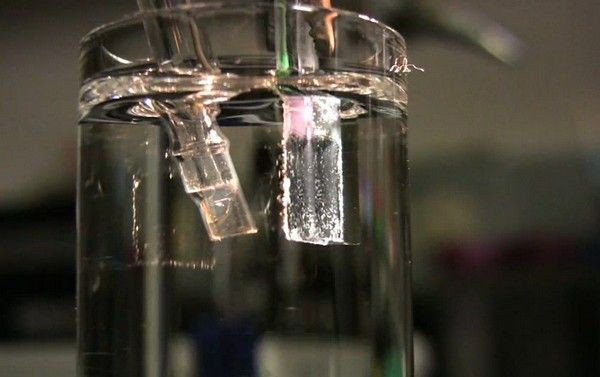Lockheed Martin Buys MIT-Spinoff Sun Catalytix After It Reinvents Itself

Lockheed Martin Corp. (NYSE:LMT) said Monday its purchase of Sun Catalytix Corporation, which developed technology to extract hydrogen from sunlight, will add to “existing Lockheed Martin capabilities in the area of energy management and efficiency.”
Founded in 2008 by renowned chemist and professor Daniel Nocera, Sun Catalytix aimed to develop an artificial form of photosynthesis to harvest hydrogen from solar energy. The implications were big. Producing hydrogen without fossil fuels on a large scale would revolutionize energy production and is considered a kind of holy grail of renewables. Currently most companies make hydrogen by splitting carbon dioxide molecules, a costly and polluting process.
For years Sun Catalytix worked on a catalyst that would use sunlight to split water molecules and harvest hydrogen. The company received a $4 million grant from the Department of Energy in 2010 to help fund the research. In 2011, the company unveiled a sample device made of a solar cell, cobalt and nickel that could split water and harvest hydrogen in a fuel cell. But the company soon realized it would take many more years and a lot more investment capital to bring the technology to market. Sun Catalytix CEO Mike Decelle told MIT Technology Review last year that raising the needed capital for an untested technology like this is “a tough pitch.”
So Sun Catalytix put its “artificial leaf” development on hold and focused on so-called flow batteries that can store solar and wind energy, or provide multiple hours of backup power to buildings in the event of a power outage. The company claims it can deliver one megawatt of power for up to four to six hours using a battery roughly the size of a shipping container at a cost significantly lower than the current long-lasting batteries used in municipal power grids.
While not as innovative as a solar panel that could split water molecules, the flow battery technology and Sun Catalytix’s bevy of patents are what captured Lockheed Martin’s attention. The defense contractor says Sun Catalytix will be renamed Lockheed Martin Advanced Energy Storage LLC, and will operate through the company’s Missiles and Fire Control business area. The deal includes Sun Catalytix’s approximately 25 employees. Lockheed Martin didn’t say how much it paid in the acquisition.
Lockheed Martin shares were up 86 cents to $176.01 in Monday morning trading after the acquisition was announced.
© Copyright IBTimes 2025. All rights reserved.






















